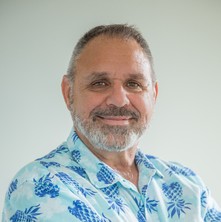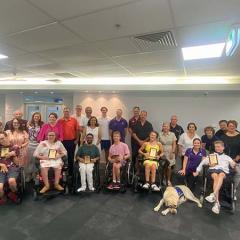Professor James Ward, director of the UQ Poche Centre for Indigenous Health, and Professor Fiona Stanley, researcher at the University of Western Australia, write for The Australian.

Little did anyone know that just a few years after the Uluru Statement from the Heart was presented to the Australian government (and rejected), the First Nations leadership would be able to show just how powerful having a voice could be for their health and wellbeing.
Given the previous experience with the H1N1 influenza pandemic in 2009, our First Nations health professionals were aware of the likely disastrous outcomes of the approaching COVID-19 pandemic. In 2009, the exclusion of First Nations peoples in preparedness and response planning in the Federal Government’s Action Plan resulted in higher notifications, hospitalisations and deaths from H1N1 in Aboriginal and Torres Strait Islanders across the nation.
The early information from China and Italy alerted us to COVID-19 being more contagious, more likely to require hospitalisation (including intensive care) and have a higher case fatality rate (deaths per people infected) than influenza, particularly among the elderly and those with chronic disease. Translating this to our First Nations meant that they would be at particularly high risk from COVID-19.
The patterns of excess acute and chronic diseases, poor social circumstances, poor housing and homelessness, substance abuse and poor nutrition (both over and underweight), mental health problems which are more prevalent in our First Nations, are reasons for their higher risk. These are not actually First Nations problems but the result of the removal of their lands, culture and children. They are a result of decades of racist and harmful policies, neglect, marginalisation, poor educational and employment opportunities and rejection after rejection of requests for recognition of the first peoples who have been here for probably more than 60,000 years.
Despite these high rates of serious illness, they are much less likely to be diagnosed early, receive screening and get good care, even for those living in major urban and regional centres, close to good services. The majority, 80 per cent, of Aboriginal and Torres Strait Islander people, live in urban centres and rural towns. Much of this poor care is due to overt individual and systemic racism and an understandable reluctance by First Nations people to use mainstream health services. Much of the huge investment in Aboriginal services was not developed in collaboration with them, most were designed by possibly well-meaning bureaucrats who were ignorant of the contexts in which First Nations were living, and remote from their experiences.
Given this background, the response of the First Nations to the pandemic is all the more remarkable. As they comprise 3 per cent of the population, we would have expected at least 3 per cent of Australia’s 27,750 cases i.e. 850, would have been in First Nations populations. As of January 2021, there have only been 148 cases nationwide, 15 per cent of these hospitalised, one in intensive care and no deaths. There have been no cases in remote communities and none associated with the Black Lives Matter marches. The rate of infection in the non-Indigenous population was 1.12 per 1000 people while that for First Nations was only 0.19 per 1000; this is a six-fold difference. A complete reversal of the “gap”. The death rate for non-Indigenous people was .04 per 1000 people and zero for First Nations. Not only did they save hundreds of cases and deaths, they avoided significant hospital and intensive care costs. This response is the best of any Indigenous group in the world with many having devastating outcomes (such as Navajo, Canada, Brazil).
How did they do it? The Aboriginal Community Controlled Health services under the national co-ordination of NACCHO, swung in to action across the country. Their outstanding health professional and organisational leadership rapidly implemented best practice across all Aboriginal Community Controlled health and welfare organisations. Many heading up the ACCHOs are not only well trained medically but also have public health training and knew exactly what they had to do to protect their communities and to manage disease if it occurred.



